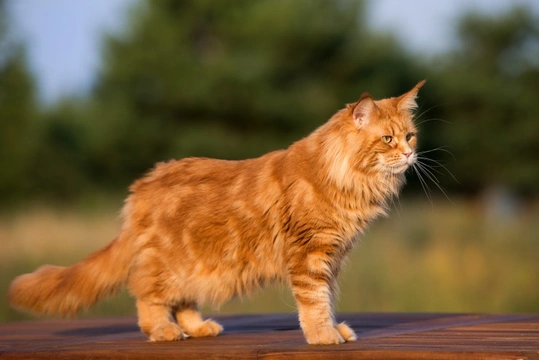
The different types of fur that cats have
When you think of the average cat, you will likely simply think cat=small furry animal. However, there are a whole different types of hair and fur on your cat’s body-all cats have at least four types of hair, and some have even more! If this is news to you and this wasn’t something that you really pay any mind to generally, then read on-in this article, we will look at the different types of hair or fur that cats have, how it differs, and the roles that it fulfils. Read on to learn more.
Fur types
In this instance, the fur we are talking about is the fur that covers most of your cat’s body-and even this fur can be found in variants including long haired, short haired, semi-longhaired, curled, crimped and more!
Long hair, short hair and semi-long hair are all fairly common in cats, but curled or crimped hair occurs due to a hereditary genetic anomaly, which was considered to be a desirable trait within some breeds, and so bred into the line!
As well as the surface fur that displays the cat’s colouring and fur texture, looking below the surface is much more…
Guard hair
Guard hair or guard hairs are the top layer of the coat-the longest hairs, which are often a touch coarser than their underlying layers of fur, and which helps to insulate the cat against the cold, keep the wind out, and help water to run off their fur without drenching them immediately. Dogs too have guard hairs, but while the guard hair of dogs tends to be quite coarse, in the cat it is usually comparatively smooth and soft.
The guard hairs however are not the main part of the hairs that portray the cat’s colours and patterns-this is presented in the awn hair, which we will look at later on.
Down hair
Down hair is constructed of softer, shorter hairs than the outer layer of guard hairs, and this is often referred to as the cat’s undercoat. This hair is often plush and thick-particularly in breeds that hail from colder climates and that have thick, heavy coats such as the Maine coon-a large and very hardy breed that was developed in Maine, New England, where the weather also falls into the double minus digits temperature wise in the winter.
The down hair is soft, thick and warm and when the cat is cold, stands up slightly, allowing warm air to be trapped next to the cat’s body, to keep them warm. The outer guard hairs protect the down hair from wind and to some extent, rain.
When you brush and groom your cat, it is important to get your brush or comb right down to the skin, and to work through the down hair-if you do not do this, the outer layer of hair may look smooth, but the lower layer may be knotted or matted, and uncomfortable.
Also, when your cat sheds in the spring, this is the coat that they lose the most of, as they do not need to be so warm during the hotter months of the year.
Awn hair
Awn hairs are the middle stage in the coat-the one between the guard hairs and the down hairs, which brings the coat together as one unit rather than being formed of separate layers of fur that are not intermingled.
The awn hairs are longer than the down hairs but shorter than the guard hairs, and they help to protect the coat and down hairs, and generally contain most of the colouring and patterning that makes the cat’s coat what it is.
Whiskers
Whiskers might feel very different to fur and hair, but they are constructed of the same materials-keratin and proteins, but just a little coarser than the soft fur of the cat’s coat. Additionally, whiskers are connected to very nerve-rich areas of the cat’s body, such as the nose and muzzle. This allows the cat to receive feedback about their immediate surroundings, but transmitting vibrations along the whiskers to the nerves. This allows cats to determine proximity to things, the type of materials that the object is made from, and the perspective of the object and whether or not, say, a gap is large enough for the cat to fit through.
Cats also have whiskers above their eyes too, which fulfil the same purpose-providing feedback and sensory input from the world around them-as well as helping to ensure that dust and debris are caught before they are likely to enter the eye itself and cause an irritation or problem.
A cat’s whiskers are very important to them-if they are trimmed or cut, this will cause your cat to feel rather disoriented, and they will probably feel like this to some extent until the whiskers grow back to their normal length.



